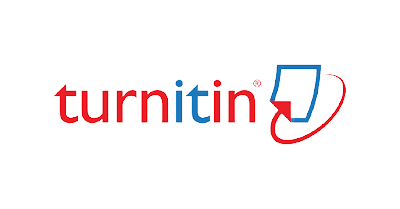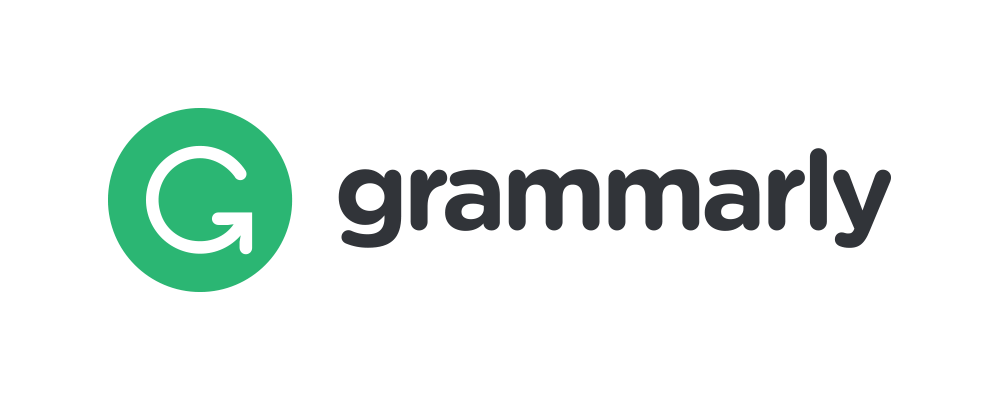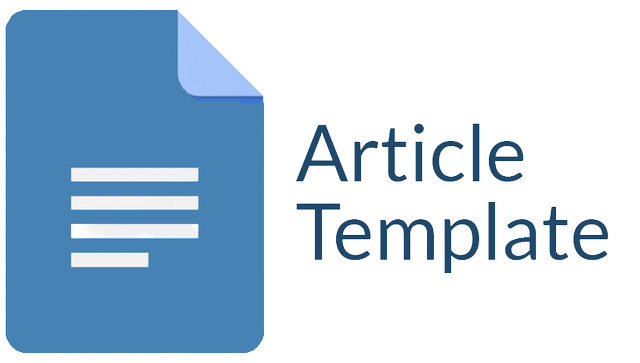EVALUASI IMPLEMENTASI KURIKULUM ROBOTIKA PADA SMPIT INSAN SEJAHTERA SUMEDANG
Abstract
The purpose of this study is to describe the evaluation of the implementation of the robotics curriculum. Research place at SMPIT Insan Sejahtera Sumedang. Evaluation of the implementation of the robotics curriculum in research using a descriptive evaluation method of case study design with a qualitative approach. The evaluation model used in this study adopts the CIPP evaluation model which is limited to input, process, and product components. Participants in this study were principals, vice principals, robotics teachers and students of SMPIT Insan Sejahtera class IX. The criteria in this study also act as an instrument in conducting evaluation research. The data collection technique used in this study was a semi-structured interview. The results showed that in general, the evaluation of the implementation of the robotics curriculum at SMPIT Insan Sejahtera has shown good results even though there are several aspects that still require attention and improvement for the success of learning implementation in the future. Some aspects that need to be considered come from input components such as teacher competence, learning infrastructure, and supervision of the fulfillment of learning outcomes. While the process component is related to a series of learning planning, one of which is the selection of learning methods that are considered inappropriate to be applied to students. All aspects of the curriculum product component show good results and are in accordance with research evaluation criteria.
Downloads
References
Adrian, F. A., Putri, V. S., & Suri, M. (2021). Hubungan Belajar Online di Masa Pandemi Covid 19 dengan Tingkat Stress Mahasiswa S1 Keperawatan STIKes Baiturrahim Jambi. Jurnal Akademika Baiturrahim Jambi, 10(1), 66. https://doi.org/10.36565/jab.v10i1.276
Allan C. Ornstein and Francis P. Hunkins. (2009). Curriculum Foundation, Principles, and Issues. 72.
Amita Tri Prasasti, P., & Dewi, C. (2020). Pengembangan Assesment of Inovation Learning Berbasis Revolusi Industri 4.0. untuk Guru Sekolah Dasar. Jurnal Ilmiah Sekolah Dasar, 4(1). https://doi.org/10.23887/jisd.v4i1.24280
Ansyar, M. (2015). KURIKULUM : Hakikat, Fondasi, Desain dan Pengembangan. In Kencana, Prenadamedia Group.
Ardyanto, Y., Dewi Koeswati, H., & Giarti, S. (2018). Model Problem Based Learning (Pbl) Berbasis Media Interaktif Untuk Meningkatkan Keterampilan Berpikir Kritis Dan Hasil Belajar Pada Sub Tema Lingkungan Tempat Tinggalku Kelas 4 Sd. Pendekar : Jurnal Pendidikan Berkarakter, 1(1), 189. https://doi.org/10.31764/pendekar.v1i1.358
Dharmawan, F., Suherman, A., Kurniawan, B., & Rahmatia, S. (2024). Implementasi Pendidikan Dasar Robotika melalui Penggunaan Mikrokontroler Arduino untuk Siswa Kelas 12 SMA Al Fityan School Tangerang. Prosiding Seminar Nasional Pemberdayaan Masyarakat (SENDAMAS), 3(1). https://doi.org/10.36722/psn.v3i1.2490
Dwi Rahmawati, F., Sutiyah, & Abidin, N. F. (2022). Implementasi Pembelajaran Sejarah Dalam Kurikulum Merdeka Kelas X di SMA Penggerak Surakarta. Jurnal Candi, 22.
Ellyzabeth Sukmawati, Iwan Adhicandra, & Nur Sucahyo. (2022). Information System Design of Online-Based Technology News Forum. International Journal Of Artificial Intelligence Research, 1.2. https://doi.org/https://doi.org/10.29099/ijair.v6i1.2.593
Fatimah, S., Devi, E., & Kamilah, Z. (2022). Analisis Perbedaan Kemampuan Berpikir Tingkat Tinggi Peserta Didik menggunakan Problem Based Learning dan Contextual Teaching and Learning dalam Pembelajaran PAI. Jurnal Kajian Pendidikan Agama Islam, 1(2), 126–136.
Fonna, N. (2019). Pengembangan Revolusi Industri 4.0 dalam Berbagai Bidang. Guepedia Publisher, 12–26.
Frydenberg, M., & Andone, D. (2011). Learning for 21 st Century Skills. International Conference on Information Society, i-Society 2011, 314–318. https://doi.org/10.1109/i-society18435.2011.5978460
Gunawan, I., & Palupi, A. R. (2016). Taksonomi Bloom – Revisi Ranah Kognitif: Kerangka Landasan Untuk Pembelajaran, Pengajaran, Dan Penilaian. Premiere Educandum : Jurnal Pendidikan Dasar Dan Pembelajaran, 2(02). https://doi.org/10.25273/pe.v2i02.50
Hamidah. (2023). Implementasi Kurikulum Merdeka Belajar Pada Mata Pelajaran Pendidikan Agama Islam Dan Budi Pekerti Di Smk Negeri 1 Demak …. Undergraduate (S1) Thesis, IAIN Kediri, 6, 7765–7774.
Hermann M., T., P., & B., O. (2016). Design principles for industrie 4.0 scenarios. Proceedings of the Annual Hawaii International Conference on System Sciences, 2016-March, 3928–3937.
Izza, A. Z., Falah, M., & Susilawati, S. (2022). Studi literatur: problematika evaluasi pembelajaran dalam mencapai tujuan pendidikan di era merdeka belajar. Konferensi Ilmiah Pendidikan Universitas Pekalongan 2020, 10–15.
Jumin, H. B. (2012). Sains dan Teknologi dalam Islam Tinjauan Genetis dan Ekologis. 11–12.
Kemendikbud. (2022). Tahapan Implementasi Kurikulum Merdeka.
Lase, D. (2019). Pendidikan di Era Revolusi Industri 4.0. SUNDERMANN: Jurnal Ilmiah Teologi, Pendidikan, Sains, Humaniora Dan Kebudayaan, 12(2), 28–43. https://doi.org/10.36588/sundermann.v1i1.18
Lou, S. J., Chou, Y. C., Shih, R. C., & Chung, C. C. (2017). A study of creativity in CaC 2 steamship-derived STEM project-based learning. Eurasia Journal of Mathematics, Science and Technology Education, 13(6), 2387–2404. https://doi.org/10.12973/EURASIA.2017.01231A
Miller, J. P., & Seller, W. (1985). Curriculum: Perspectives and Practice. 356.
Nurasiah, I., Marini, A., Nafiah, M., & Rachmawati, N. (2022). Nilai Kearifan Lokal: Projek Paradigma Baru Program Sekolah Penggerak untuk Mewujudkan Profil Pelajar Pancasila. Jurnal Basicedu, 6(3), 3639–3648. https://doi.org/10.31004/basicedu.v6i3.2727
Oktaviani, A. M., Marini, A., & Zulela MS, Z. M. (2023). Pengaruh Penerapan Kurikulum Merdeka Tehadap Hasil Belajar IPS Ditinjau Dari Perbandingan Kurikulum 2013. Jurnal Educatio FKIP UNMA, 9(1), 341–346. https://doi.org/10.31949/educatio.v9i1.4590
Oktivian, R. F., & Febrianti, R. A. M. (2018). Transformasi Digital Menyambut Kehadiran Revolusi Industri 4 . 0. Conference on Management and Behavioral Studies.
Prasetyo, B. D., Febriani, N. S., & Weda Asmara, W. D. (2018). Komunikasi Pemasaran Terpadu (Pendekatan Tradisional Hingga Era Media Baru). November, 272.
Ridwan, A. Y. (2020). Implementasi Kurikulum Robotik di Madrasah Tsanawiyah Pondok Pesantren Husnul Khotimah 2 Kuningan. Charity, 3(2). https://doi.org/10.25124/charity.v3i2.2539
Sukmawati, E., Imanah, N. D. N., & Rantauni, D. A. (2023). Implementation and challenges of project-based learning of STEAM in the university during the pandemic: A systematic literature review. JINoP (Jurnal Inovasi Pembelajaran), 9(1). https://doi.org/10.22219/jinop.v9i1.25177
Vitale, R. (2009). United States Patent Application. RXC Graph and RXC Z-Score Graph Methods, 1(19), 1–4.
Copyright (c) 2024 Destryana Riffandi, Rusman Rusman

This work is licensed under a Creative Commons Attribution-ShareAlike 4.0 International License.
Jurnal allows anyone to compose, correct, and do derivative works, even for commercial purposes, as long as they credit for the original work. This license is the freest. It is recommended for maximum distribution and use of licensed material.
The submitted paper is assumed not to contain any proprietary materials that are not protected by patent rights or patent applications; The responsibility for technical content and protection of proprietary materials rests with the authors and their organizations and not the responsibility of journal or its editorial staff. The primary (first/appropriate) author is responsible for ensuring that the article has been viewed and approved by all other authors. The author's responsibility is to obtain all necessary copyright waivers to use any copyrighted material in the manuscript before submission.
Jurnal Pendidikan, Sains dan Teknologi allows the author(s) to hold the copyright without restrictions and allow the author(s) to retain publishing rights without restrictions. Jurnal Pendidikan, Sains dan Teknologi CC-BY-SA or an equivalent license as the optimal license for the publication, distribution, use, and reuse of scholarly work. Jurnal Pendidikan, Sains dan Teknologi allows the author(s) to hold the copyright without restrictions and allow the author(s) to retain publishing rights without restrictions. Jurnal Pendidikan, Sains dan Teknologi CC-BY-SA or an equivalent license as the optimal license for the publication, distribution, use, and reuse of scholarly work.
In developing strategy and setting priorities Jurnal Pendidikan, Sains dan Teknologi recognize that free access is better than priced access, libre access is better than free access, and libre under CC-BY-SA or the equivalent is better than libre under more restrictive open licenses. We should achieve what we can when we can. We should not delay achieving free in order to achieve libre, and we should not stop with free when we can achieve libre.
Jurnal Pendidikan, Sains dan Teknologi is licensed under a Creative Commons Attribution-ShareAlike 4.0 International License.
You are free to:
- Share a copy and redistribute the material in any medium or format
- Adapt a remix, transform, and build upon the material for any purpose, even commercially.
- The licensor cannot revoke these freedoms as long as you follow the license terms.






